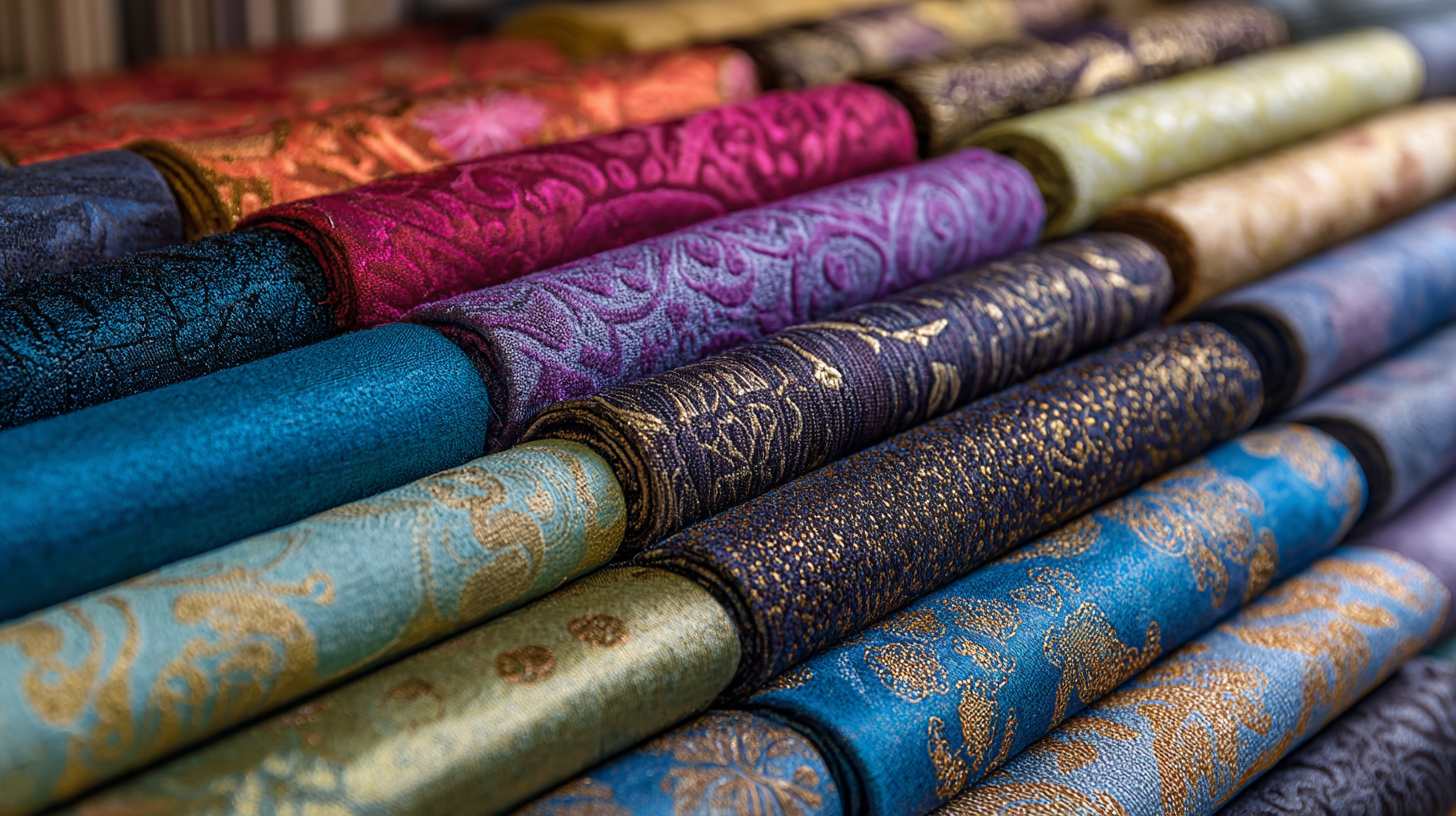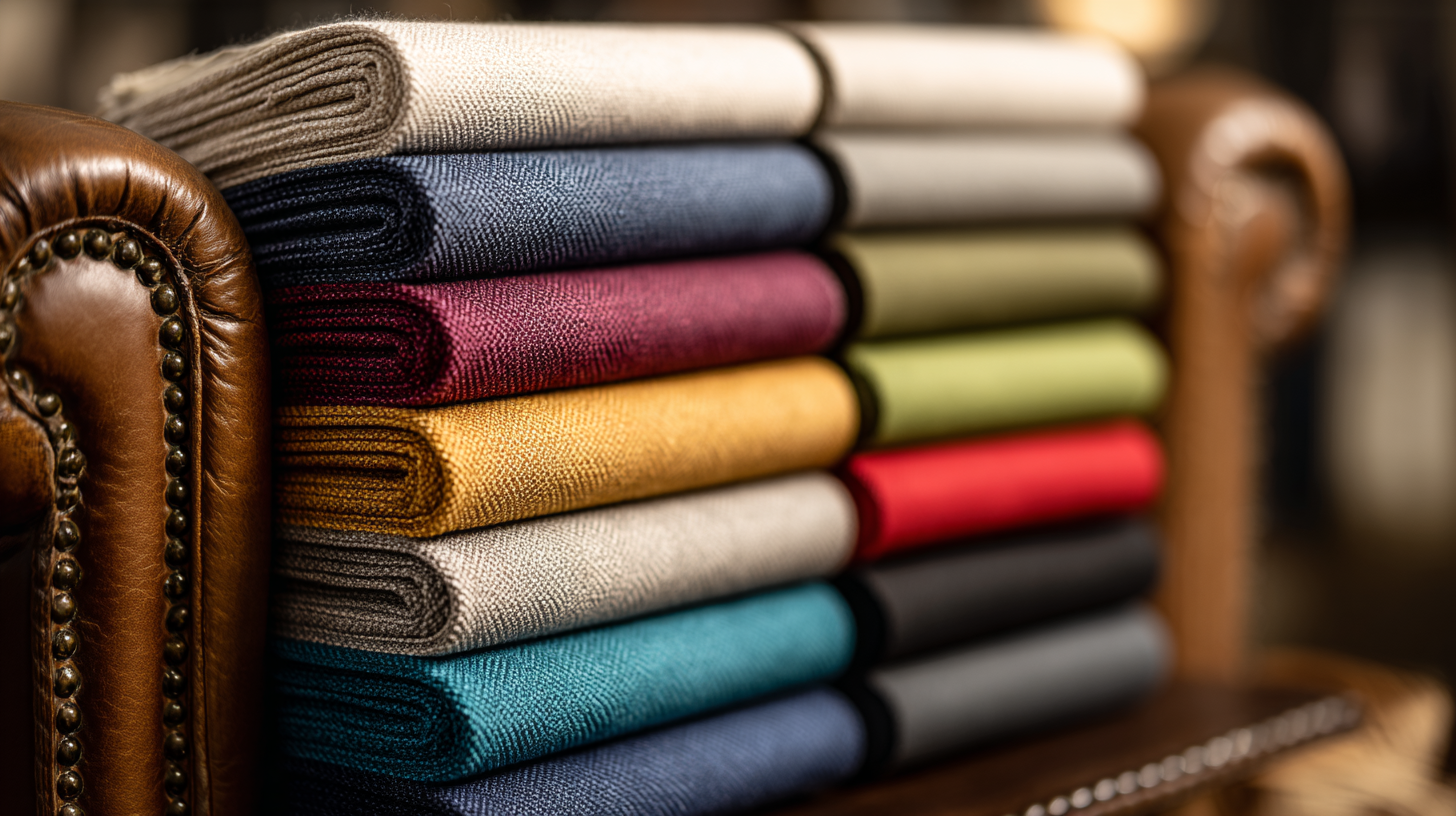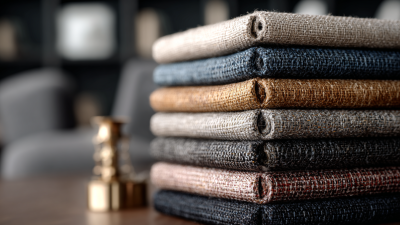Blog

Blog

Blog

The Evolution of Sofa Fabric Through the Decades and Its Impact on Interior Design Choices
The evolution of sofa fabric over the decades has played a critical role in shaping interior design choices, reflecting both cultural trends and technological advancements. As reported by the Fabric Industry Association, the upholstery market has witnessed a significant shift, with sustainable materials increasingly demanded—evidenced by a 25% growth in eco-friendly fabric sales over the past five years. Furthermore, a study by the Interior Design Society highlights that over 65% of consumers consider sofa fabric as one of the most important factors when selecting furniture for their homes. This changing landscape not only influences consumer preferences but also propels designers to innovate in terms of and functionality.

By examining the historical trajectory of sofa fabrics, we can better understand their enduring impact on interior design and the contemporary choices that define our living spaces today.
The Origins of Sofa Fabrics: A Historical Overview of Materials
Sofa fabrics have undergone significant transformations throughout history, reflecting societal changes, technological advancements, and shifts in design aesthetics. In the early days, natural materials such as cotton, linen, and wool dominated the landscape of upholstery. These fabrics were not only accessible but also offered a range of textures and patterns that contributed to the overall charm of interior spaces. The introduction of dyeing techniques allowed for greater variety, with vibrant colors emerging in the 18th and 19th centuries, encapsulating the opulence of the Victorian era.
As the Industrial Revolution took hold, synthetic fabrics like polyester and nylon were introduced, revolutionizing the world of furniture upholstery. These materials provided increased durability and ease of maintenance, making sofas more practical for everyday living. The latter half of the 20th century saw a blend of organic and synthetic materials, reflecting a growing emphasis on sustainability and eco-friendliness in design choices. Today, the evolution of sofa fabrics continues to shape interior design trends, offering a rich tapestry of options that cater to diverse styles and preferences, ensuring that fabric selection remains a pivotal aspect of home decor.

Key Fabric Trends of the 1920s to 1950s: Textile Innovation and Design
The 1920s to 1950s marked a fascinating period in the evolution of sofa fabrics, propelled by significant textile innovations and shifting design sensibilities. The 1920s, characterized by the opulent Art Deco style, saw fabrics that embodied luxury and glamour. Bold geometric patterns, metallic threads, and rich, vibrant colors defined not only the sofas of the era but also the entire interior design landscape. Velvet, silk, and brocade became go-to materials, reflecting the exuberance of the Roaring Twenties and setting a tone of sophistication in living spaces.
As the decades progressed, the 1930s introduced an even greater emphasis on comfort and functionality amidst the backdrop of the Great Depression. This led to a shift towards more durable and practical fabrics, such as cotton and linen blends, while still embracing artistic expression. The 1940s and 1950s, driven by post-war optimism, embraced bold colors and patterns once again, transitioning to new synthetic fibers that offered both versatility and ease of maintenance. These changes not only influenced sofa design but also redefined spaces, reflecting societal values and innovations in manufacturing that would continue to shape interior design choices for years to come.
The Evolution of Sofa Fabric Trends (1920s - 1950s)
This bar chart illustrates the popularity of different sofa fabric trends from the 1920s to the 1950s, showing a significant rise in fabric innovation and design choices over the decades.
The Rise of Synthetics: How the 1960s Revolutionized Sofa Fabrics
The 1960s marked a significant turning point in the world of furniture design, particularly with the advent of synthetic fabrics. As the desire for modernity and comfort grew, so too did the innovations in materials. The introduction of polyester, nylon, and acrylic not only provided vibrant colors and patterns that were previously unattainable, but also offered enhanced durability and ease of maintenance. This shift in sofa fabric not only influenced aesthetic choices but also changed how homeowners approached interior design, as bold colors and textures became more prominent.
Tips for Choosing Sofa Fabrics: When selecting a sofa, consider the lifestyle needs of your household. For families with kids or pets, synthetic fabrics like microfiber can withstand wear and tear while offering a stylish look. Additionally, don’t shy away from experimenting with colors and patterns that reflect your personality. Remember, the right fabric can transform an ordinary sofa into a statement piece in your living room.
Furthermore, the rise of synthetics in the 60s encouraged a playful mix-and-match approach to interior design. Homeowners began to embrace avant-garde designs, where sofas were no longer just functional but expressions of individuality. This era set the stage for future innovations in fabric technology, leading to a broader acceptance of unconventional materials that continue to influence today’s design choices.
Sustainability and Eco-Friendly Fabrics in Contemporary Interior Design
In recent years, the interior design landscape has undergone a significant transformation, particularly with the growing emphasis on sustainability and eco-friendly materials. Designers are increasingly opting for fabrics that are not only aesthetically pleasing but also sustainable. This shift is driven by a heightened awareness of environmental issues, prompting consumers to seek out options that minimize their carbon footprint. Natural fibers such as organic cotton, linen, and hemp have gained popularity, providing durable alternatives that blend seamlessly into various interior styles while promoting a healthier living environment.
Moreover, innovations in textile production have introduced recycled materials into the market, offering endless possibilities for fabric design. Recycled polyester, made from post-consumer plastic bottles, exemplifies how style and sustainability can coexist. As designers embrace these eco-friendly options, they are not only contributing to the planet’s well-being but also setting new trends that influence consumer preferences. This shift towards sustainable fabrics reflects a broader movement in contemporary interior design, where the choice of materials is becoming a reflection of personal values and environmental consciousness, ultimately reshaping the very essence of home aesthetics.

The Future of Sofa Fabrics: Trends Shaping Tomorrow's Interiors
As we look to the future of sofa fabrics, several trends are emerging that are set to reshape interior design choices. Sustainability is at the forefront, with consumers increasingly seeking eco-friendly materials that reduce environmental impact. Organic fabrics, recycled textiles, and innovative sustainable options such as mushroom leather and hemp are becoming popular, allowing designers to create stylish yet responsible designs. This shift towards greener materials not only influences the selection of fabrics but also affects color palettes, with earthy tones and natural motifs gaining traction.
In addition to sustainability, technology is playing a crucial role in the evolution of sofa fabrics. The rise of smart textiles introduces fabrics that can change color, resist stains, or even regulate temperature. These advancements enable designers to push the boundaries of creativity while meeting the functional needs of modern living spaces. Furthermore, the growing trend of personalization allows consumers to choose customizable fabrics, enabling them to express their individual style. This blending of technology, sustainability, and personalization is set to significantly influence the aesthetics and functionality of tomorrow's interiors, making sofa fabrics an essential element in shaping contemporary home environments.
The Evolution of Sofa Fabric Through the Decades and Its Impact on Interior Design Choices
| Decade | Material | Color Trends | Design Influence | Future Trends |
|---|---|---|---|---|
| 1920s | Velvet | Rich jewel tones | Art Deco aesthetics | Sustainable fabrics |
| 1950s | Cotton | Pastel colors | Mid-century modern | Smart textiles |
| 1980s | Microfiber | Bright, bold colors | Eclectic styles | Biodegradable materials |
| 2000s | Leather | Neutral tones | Minimalism | Customization options |
| 2020s | Recycled textiles | Earthy tones | Sustainable design | Tech integration |
Related Posts
-

What is Sofa Fabric? Exploring the Different Types and Their Unique Qualities
-

Understanding the Challenges with Choosing the Right Sofa Material
-

The Ultimate Guide to Choosing the Right Seat Fabric: Insights and Trends from the Industry
-

Innovative Solutions for Enhancing Durability and Comfort in Furniture Fabric Selection
-

Your Ultimate Guide to Choosing the Best Seat Fabric for Every Interior Style
-

How to Choose the Perfect Upholstery Canvas for Your Home Decor
